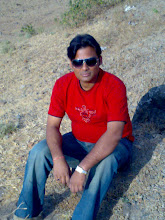Image Resolution Resolution can be defined as "the ability of an imaging system to record fine details in a distinguishable manner". A working knowledge of resolution is essential for understanding both practical and conceptual details of remote sensing. Along with the actual positioning of spectral bands, they are of paramount importance in determining the suitability of remotely sensed data for a given applications. The major characteristics of imaging remote sensing instrument operating in the visible and infrared spectral region are described in terms as follow:
Resolution can be defined as "the ability of an imaging system to record fine details in a distinguishable manner". A working knowledge of resolution is essential for understanding both practical and conceptual details of remote sensing. Along with the actual positioning of spectral bands, they are of paramount importance in determining the suitability of remotely sensed data for a given applications. The major characteristics of imaging remote sensing instrument operating in the visible and infrared spectral region are described in terms as follow:
- Spectral resolution
- Radiometric resolution
- Spatial resolution
- Temporal resolution
 Feature Extraction does not mean geographical features visible on the image but rather "statistical" characteristics of image data like individual bands or combination of band values that carry information concerning systematic variation within the scene. Thus in a multispectral data it helps in portraying the necessity elements of the image. It also reduces the number of spectral bands that has to be analyzed. After the feature extraction is complete the analyst can work with the desired channels or bands, but inturn the individual bandwidths are more potent for information. Finally such a pre-processing increases the speed and reduces the cost of analysis.
Feature Extraction does not mean geographical features visible on the image but rather "statistical" characteristics of image data like individual bands or combination of band values that carry information concerning systematic variation within the scene. Thus in a multispectral data it helps in portraying the necessity elements of the image. It also reduces the number of spectral bands that has to be analyzed. After the feature extraction is complete the analyst can work with the desired channels or bands, but inturn the individual bandwidths are more potent for information. Finally such a pre-processing increases the speed and reduces the cost of analysis.Source






